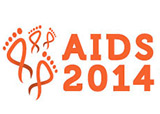 A new UNAIDS report on the global HIV pandemic celebrates significant drops in HIV incidence and AIDS-related deaths while outlining ways to address major inequities of the global pandemic. Called the UNAIDS Gap report, the document highlights the concern that an estimated 19 million of the 35 million people living with HIV worldwide don’t know their status. The report was issued in anticipation of the 20th International AIDS Conference (AIDS 2014), taking place this week in Melbourne, Australia.
A new UNAIDS report on the global HIV pandemic celebrates significant drops in HIV incidence and AIDS-related deaths while outlining ways to address major inequities of the global pandemic. Called the UNAIDS Gap report, the document highlights the concern that an estimated 19 million of the 35 million people living with HIV worldwide don’t know their status. The report was issued in anticipation of the 20th International AIDS Conference (AIDS 2014), taking place this week in Melbourne, Australia.
“Whether you live or die should not depend on access to an HIV test,” said Michel Sidibé, executive director of UNAIDS. “Smarter scale-up is needed to close the gap between people who know their HIV status and people who don’t, people who can get services and people who can’t, and people who are protected and people who are punished.”
The estimated 2.1 million new HIV infections in 2013 represents a 13 percent decrease in HIV incidence in three years and is the lowest level found this century. The Caribbean has seen the greatest drop in new HIV infections, with a 40 percent decline since 2005. Meanwhile, during that same time frame the rates have risen in western Europe and North America (8 percent), the Middle East and North Africa (7 percent) and eastern Europe and central Asia (5 percent).
After peaking in 2005, annual global AIDS-related deaths have fallen 35 percent. The Middle East and North Africa have experienced a 66 percent increase in AIDS-related deaths since 2005. Eastern Europe and central Asia is the only other region to experience an increase, with a 5 percent uptick during the same time frame.
The UNAIDS report estimated that HIV prevalence is 28 times higher among injection drug users, 12 times higher among sex workers, 19 times higher among men who have sex with men (MSM) and up to 49 times higher among transgender women when compared with the rest of the adult population.
Efforts to provide antiretrovirals to people with HIV are succeeding dramatically, with 2.3 million new people gaining access in 2013, for a total of 13 million on therapy by the end of last year. UNAIDS estimates that just under 14 million people are now taking ARVs and that if such scale-up is accelerated then the world could avoid 18 million new HIV infections and 11.2 million AIDS-related deaths by 2030.
To read the press release, click here.
Advertisement
Advertisement
Advertisement






Comments
Comments